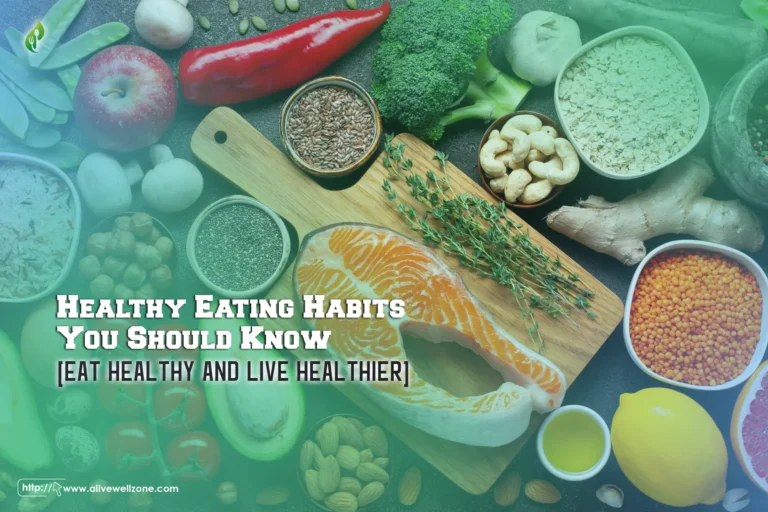
Last Updated on November 8, 2024 by Helena Akter
When Sciatica’s sharp pain runs down your leg, you feel defeated. Even if you try everything for ease, you only get temporary relief. Interestingly, your diet might worsen your pain. There are foods to avoid with sciatica if you want long-term relief.
You must avoid processed foods, red meat (consider organic), fried foods, sugary drinks, citrus fruits, and foods high in histamine (like aged cheese). These foods can worsen inflammation and aggravate sciatica pain.
The good news? We’ll share delicious, anti-inflammatory foods that can support you in recovery. You might find it hard to create a sciatica-friendly diet. So, we’ve also shared some practical tips for you. So, keep reading.
What is Sciatica?
Sciatica is pain that radiates down the leg due to irritation or compression of the sciatic nerve, which starts in the lower back and extends through the legs, buttocks, and feet.
Causes of Sciatica
According to a recent U.S. study, approximately one in four older Americans has encountered the intense and occasionally debilitating pain associated with sciatica. When it comes to sciatica, there are several reasons why it can occur.

Here are the main ones —
- Herniated Disc: It happens when the inner part of a spinal disc bulges out and puts pressure on the sciatic nerve.
- Spinal Stenosis: This condition occurs when the spinal canal narrows due to bone spurs or bulging discs, which can squeeze the nerve.
- Spondylolisthesis: When a spinal vertebra slips out of place, it can compress the nerve.
- Pregnancy: Hormonal changes and increased weight during pregnancy can lead to sciatic nerve pressure.
- Trauma: Nerve damage may result from lower back or pelvic injuries.
- Muscle Strain or Piriformis Syndrome: Inflamed or tight muscles near the sciatic nerve can irritate.
Foods to Avoid with Sciatica
There are certain sciatica pain food to avoid. So, let’s quickly talk about foods to avoid with sciatica pain —

Processed Foods
Supermarkets are full of processed foods, which many of us choose for convenience. In fact, 60% to 90% of the food and drinks in the typical American diet are highly processed, according to research.
These foods often contain artificial additives, excessive salt, and sugar.
Plus, ingredients like monosodium glutamate can increase inflammation in the body—a major contributor to sciatica pain. So, you need to cut out processed foods to support your body’s natural healing process.
Salt
Too much salt can trigger inflammatory conditions like sciatica. High salt intake leads to fluid retention, which, when inefficiently expelled by the body, increases the risk of inflammation. This increased inflammatory response can cause pain in your nerves and muscles.
Hence, you should reduce your salt intake to improve your body’s healing ability and relieve symptoms of sciatica.
Sugar
Yes, sugar makes our food taste better. However, it doesn’t improve its quality in any way. Our taste buds are so used to sugar that we find it hard to go without it.
Besides the risk of diabetes, studies suggest that added sugars such as sucrose, high fructose corn syrup, and sugar-sweetened beverages increase inflammation.
If you frequently suffer from sciatica, adopting a sugar-free diet is vital. Luckily, there are alternatives to sugar. Stevia, is a plant-based sweetener. It has no adverse side effects, unlike sucralose, saccharin, and cyclamate.
Citrus Fruit
Citrus fruits like oranges, mandarins, nectarines, and grapefruit can worsen inflammation, especially oranges. Despite being rich in vitamin C, oranges have high levels of citric acid, which can quickly lead to inflammation.
If you drink orange juice every morning, you might experience joint pain—a common side effect of citric acid. To avoid these effects, consider switching to other juices like cherry or pomegranate.
Limiting Histamine-Rich Foods
Histamine, a natural compound found in various foods, can trigger inflammation and pain. If you have sciatica, you might notice that high-histamine foods like —
- Fermented items
- Soy sauce
- Aged cheese
- Red wine
- Cured meats; worsen your symptoms.
While not everyone is sensitive to these foods, it’s a good idea to limit or avoid them if they cause discomfort.
Red Meat Considerations
Red meat often receives criticism, especially from those dealing with sciatica who recommend avoiding it. However, red meat is a valuable source of irony and vitamin B. They’re important nutrients for your inflammation reduction and nervous system.
Mainly, the issue may lie in how the meat is produced. So to stay on the safe side, consider organic red meat and chicken to avoid inflammation-causing compounds. Organic meats are generally a healthier choice, providing necessary nutrients without additional risks.
Fried Foods
Foods like fried chicken, french fries, and onion rings are high in saturated and trans fats. These fats can worsen inflammation, aggravating the sciatic nerve and increasing sciatica pain.
For better sciatic pain management, choose baked or grilled foods rather than fried foods.
Spicy Foods
While spicy dishes like chilli con carne and curry may delight spice lovers, they can cause discomfort for others!
Peppers and spicy ingredients contain capsaicin, which causes a burning sensation in your mouth and throat. This sensation can also affect other parts of your body, including the sciatic nerve.
If you have inflammation in your lower legs and back or nerve damage, spicy foods may cause pain in your hamstrings.
Caffeine
Too much caffeine (from tea, coffee, or energy drinks) can make sciatica worse by irritating the affected nerves. Caffeine increases heart rate and blood pressure. In fact, caffeine overstimulates the nervous system and disrupts the body’s natural pain response.
It can also interfere with sleep, which is essential for healing and reducing inflammation. In fact, if you drink caffeine within six hours of your bedtime, it can cut your total sleep time by over an hour.

Moreover, poor sleep leads to muscle tension and stiffness, further aggravating your sciatica pain. In that case, we suggest you explore core sleep and its impact so that you can pay attention to your sleep pattern.
Avoid Overeating
Though we’re talking about foods to avoid for sciatica pain, watch your portion sizes! Overeating puts extra pressure on your surrounding nerves and spine. So, always go for smaller, more frequent meals to maintain your stable blood sugar levels and reduce inflammation spikes.
In this case, you can keep a food journal to help track your body’s response. Additionally, consider naturopathic doctors, consulting dietitians, and seeking physiotherapy or chiropractic care for recovery.
Foods to Eat If You Have Sciatica
If you’re dealing with sciatica, certain foods can make a difference. They reduce inflammation and support your overall health. Here are some great options —

Cruciferous Vegetables
These veggies—like broccoli, cabbage, Brussels sprouts, and cauliflower—are excellent for your health. Broccoli, in particular, contains sulforaphane, which has anti-inflammatory and anti-cancer properties, according to the Journal of Preventive Nutrition and Food Science
You can also try bok choy, kale, radish, turnip, and watercress. For a healthier choice, swap iceberg lettuce for spring greens.
Berries
Blueberries, raspberries, strawberries, and blackberries are rich in antioxidants. They fight free radicals and lower inflammation. Plus, they provide vitamin C, essential for collagen production and healing.
To take it further, you can take fresh or frozen berries daily and add them to yogurt, baked goods, or cereal.
Cold Water Fish
Eating cold water fish regularly has many health benefits. It includes reducing inflammation of the sciatic nerve. Now, good options include —
- Salmon
- Mackerel
- Tuna
- Herring
- Anchovy
- Cod
Since we’re taking salmon, you don’t miss out on healthy salmon recipes you can make every day. Aside from that, you don’t need to eat these fish at every meal but try to include them in your diet at least three times a week.
If fresh fish isn’t available, you can consider canned cold water fish.
Extra Virgin Olive Oil
Extra virgin olive oil, commonly used in Mediterranean countries, is praised for its health benefits. It contains oleocanthal, a compound that reduces inflammation similarly to ibuprofen. This healthy fat helps reduce inflammation in joints, muscles, and tendons and lowers bad cholesterol levels. Rich in antioxidants, olive oil can be added to salads and bread for maximum benefits. Using it with garlic can further boost its health properties.
Healthy Fats
We know omega-3 fatty acids are good for us, but don’t forget about the fats in avocados. These monounsaturated fats help keep cholesterol levels balanced and joints lubricated. Meanwhile, it can reduce nerve inflammation.
Avocados also have potassium and vitamin B, important for supporting the nervous system. Eating one avocado daily can bring these health benefits.
Nuts and Seeds
Seeds and nuts, such as —
- Almonds
- Flaxseeds
- Walnuts
- Chia seeds
- Hemp seeds
They provide omega-3 fatty acids, zinc, vitamin E, and selenium. These nutrients help protect your nerves from damage and inflammation. Plus, they’re rich in healthy fats and protein, keeping you full and energized.
So, Try eating a handful daily or adding them to salads, oatmeal, or smoothies for a nutritional boost.
Tea
To reduce inflammation, consider drinking tea, as suggested by the Arthritis Foundation. Green, black, oolong and white teas contain plant compounds with anti-inflammatory effects.
Though they taste different, they all come from the same plant. Whereas, herbal teas come from other plants and have varying antioxidant levels. Green and white teas are particularly high in polyphenols.
Importance of Diet in Managing Sciatica
You might find it uneasy to believe, but diet plays a great role in treating sciatica. By making specific dietary changes, many people have experienced significant pain relief.
Here’s why a healthy diet matters —
- Reducing Inflammation: Certain foods can lower inflammation, which is a major contributor to sciatica pain.
- Nutrition Matters: Proper nourishment supports overall health, helping your recovery and minimizing pain.
- Weight Control: Maintaining a healthy weight reduces pressure on the sciatic nerve, easing discomfort.
- Avoiding Triggers: Identifying and avoiding foods like sugar, salt, etc, that trigger pain can bring relief.
- Holistic Well-Being: A balanced diet promotes overall wellness, making you more durable against chronic pain.
Tips for Creating a Sciatica-Friendly Diet
Here are practical tips for creating a sciatica-friendly diet —
- Incorporate plenty of fruits, vegetables, leafy greens, and whole foods into your diet. These help combat inflammation.
- Ensure your diet includes a mix of proteins, healthy fats, and healthy carbohydrates.
- Stay away from high-fat meals, processed foods, and sugary snacks—they can increase inflammation.
- Try to lose weight by eating healthy to reduce pressure on your sciatic nerve, providing relief.
- Must drink ample water to support your overall health.
- Turmeric or fish oil supplements can provide extra anti-inflammatory benefits.
- Opt for smaller, healthy cravings, and frequent meals to manage weight and prevent overeating.
- Figure out what works best for your body and adjust your diet as needed.
Final Words
In managing sciatica, the right diet is important. We’ve highlighted the key foods to avoid with sciatica, such as processed foods, salt, sugar, and high-histamine items.
If you cut these out of your diet, you can reduce inflammation and ease pain. You can use these dietary changes to improve your health and manage sciatica better. With the right choices like berries, cold water fish, healthy fats, etc, your quality of life can significantly improve.
So, stay mindful of your diet, and you’ll notice the benefits over time.
FAQs
What drinks help sciatica?
Drinks like oolong, green, white, and black tea contain plant-based compounds with anti-inflammatory properties that can help alleviate sciatica symptoms.
What vitamin stops sciatica?
Vitamins like magnesium, Vitamin E, Vitamin D, fish oil (Omega-3 fatty acids), Vitamin B12, zinc, Vitamin B6, and selenium help alleviate sciatica by reducing inflammation, improving nerve health, and acting as antioxidants.
What foods trigger sciatica?
Sciatica gets triggered by inflammatory foods like refined carbohydrates, sugar, hydrogenated oils, and trans fats. Additionally, smoking can worsen the condition by increasing inflammation and reducing anti-inflammatory molecules.








